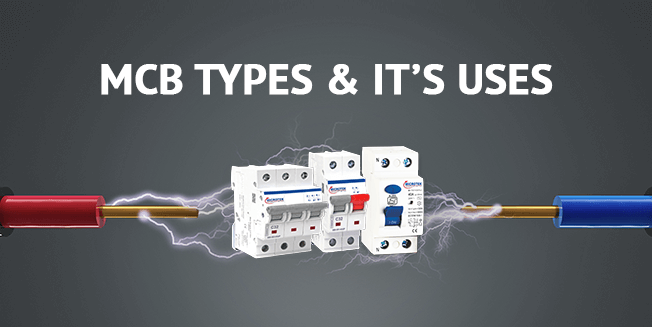
October 23 , 2021

A Miniature Circuit Breaker (MCB) is an automatically operated electrical switch utilized to shield low voltage electrical circuits from the harm brought about by excess current from an over-burdened or short circuit.
Its fundamental function is to interrupt the current stream after an issue is distinguished. Because of the mentioned qualities, it is generally utilized in homes and for wellbeing purposes.
Knowledge about the ‘Types of MCBs’ helps decide what type to utilize for the various electrical appliances at homes. You can call it a determination chart or the measures to settle on a decision prior to purchasing MCBs.
Yet, it’s vital to understand what a ‘Trip Curve’ implies before we get into that. When the ideal current loading is breached, the circuit naturally cuts off. So, Trip Curve acts as a graphical representation to know the maximum current that a specific MCB can withstand. In simpler words, it helps to understand the expected behavior of the MCB.
There are around five unique sorts of MCB, which are of types Z, B, C, D, and K.
MCB performs many functions, for instance, local control switching and isolating switches against shortcomings. It also acts as an overload protection device for installations or explicit types of electrical equipment.
In addition to the above point, it operates with most electrical appliances for domestic or modern purposes. The multitude of electric connections at home, such as lights, radiators, and fans, require MCB to check and secure them.
MCBs shield homes from current overload. Because of their capacity to deal with an immense amount of power, they are considerably more reliable and secure than a fuse. One of its benefits is that it guarantees equivalent conveyance of electrical energy across every household device.
MCBs are a trustworthy safety solution on the off chance that you have introduced radiators in your home or office. With a fruitful establishment of an MCB, you can prevent radiators from developing high voltage fluctuations as it draws a significant amount of power from the principal supply.
Every house has a broad lighting framework. MCBs can assume a critical part in the viable distribution of electricity across the lighting framework. For instance, the activity of fluorescent lights requires a ton of power when contrasted with light bulbs.
In commercial foundations, the type of MCB plays a crucial role in maintaining the productivity of the applications and installations by enhancing its energy flow. They are discovered to be of use in lodgings, stores, and bakeries.
Microtek Miniature Circuit Breaker (MCB) is the solution for the ever-changing need for electrical dispersion in various private, business, and industrial sectors. They are intended to provide improved functional safety, better congruity of service, lower operating expense, and greater convenience.